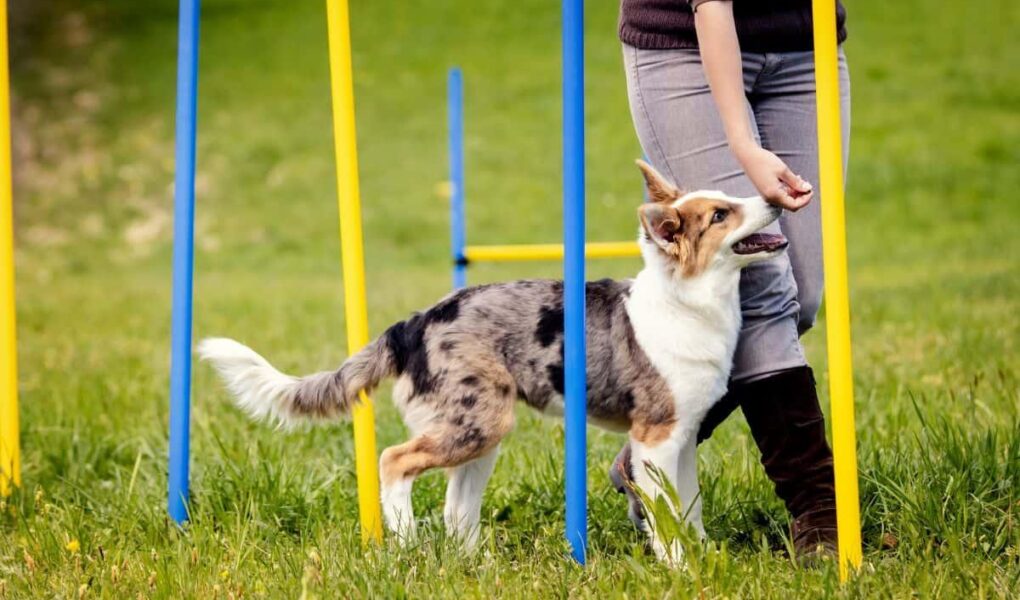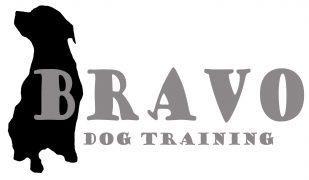Unlocking the Secrets to Successful Dog Training: A Comprehensive Guide
Every dog owner knows that the bond between human and canine is one of life’s most rewarding experiences. However, the journey to a well-behaved pup can be filled with challenges, misunderstandings, and a little chaos. Whether you’re welcoming a lively puppy into your home or trying to modify the behavior of a spirited adult dog, effective training is the key to nurturing a harmonious relationship. In this article, we’ll explore the best dog training methods and philosophies, equipping you with the tools and techniques that can turn your furry friend into a beloved companion. From positive reinforcement to patience and consistency, discover how the right approach can lead to a happy, well-adjusted dog and, ultimately, a fulfilling partnership that enriches both your lives. Join us as we delve into the world of dog training, where every bark and wag brings us one step closer to understanding our four-legged friends.
Table of Contents
- Understanding Canine Behavior for Effective Training
- Essential Techniques for Shaping Positive Dog Habits
- Choosing the Right Tools and Resources for Training Success
- Creating a Structured Training Environment for Optimal Learning
- Q&A
- Wrapping Up
Understanding Canine Behavior for Effective Training
To cultivate a strong bond with your dog, it’s essential to delve into the nuances of canine behavior. Dogs communicate largely through body language, and understanding these signals allows for more effective training. For example, a wagging tail doesn’t always indicate happiness; it can also express excitement or anxiety. Observing your dog’s posture, ear position, and movement can help you identify their emotional state and tailor your training methods accordingly. It’s important to recognize that dogs have different temperaments—some thrive on social interaction, while others may feel overwhelmed in stimulating environments. By acknowledging their unique personalities, trainers can better implement strategies that resonate with each individual dog.
Effective training also hinges on consistency and positive reinforcement. Establishing clear commands and following them consistently helps your dog understand what is expected. Pairing commands with rewards—such as treats, praise, or play—encourages desired behaviors. However, it’s crucial to time the rewards appropriately; immediate reinforcement has a stronger impact on learning. Below are a few common training commands and their characteristics:
| Command | Purpose | Recommended Reward |
|---|---|---|
| Sit | Teaches impulse control | Small treats or verbal praise |
| Stay | Promotes patience and safety | Longer playtime after success |
| Come | Enhances recall and safety | Favorite toy or treat |
Essential Techniques for Shaping Positive Dog Habits
Positive reinforcement is a cornerstone of effective dog training. By rewarding desirable behaviors, you encourage your dog to repeat those actions. Rewards can come in various forms, including treats, praise, or playtime. When your dog performs a good habit, respond immediately with a reward to reinforce the connection between the action and the positive feedback. Here are some techniques to implement in your training sessions:
- Consistency: Use the same cues and commands to avoid confusing your dog.
- Timing: Deliver rewards promptly to strengthen the association between behavior and reward.
- Gradual learning: Start with simple commands and gradually increase difficulty as your dog becomes more proficient.
Another critical aspect of shaping positive habits is setting realistic expectations. It’s essential to understand your dog’s individual personality, energy levels, and learning pace. Trying to rush training can lead to frustration for both you and your dog. Consider using a simple assessment chart to track progress and milestones:
| Behavior | Goal | Status |
|---|---|---|
| Sit | Achieve on command | ✅ Achieved |
| Stay | Hold for 5 seconds | ⚠️ In Progress |
| Come | Respond from 10 feet | ⏳ Not Started |
Choosing the Right Tools and Resources for Training Success
When embarking on a journey of canine training, selecting the appropriate tools and resources is pivotal for fostering effective communication and mutual understanding between you and your dog. Consider investing in high-quality training leashes and collars that offer comfort without compromising control. Furthermore, comfortable training pads and treat pouches enhance the training experience, making it seamless and enjoyable for both parties. You might also contemplate using clickers or whistle training methods, which can serve as effective cues that your dog will learn to associate with positive reinforcement.
In addition to physical tools, don’t overlook the wealth of educational resources available today. From instructional books and online articles to video tutorials, there are countless materials to guide you through various training techniques. You may find it beneficial to join local training clubs or online forums, allowing you to connect with fellow dog owners and trainers. To help you navigate this plethora of options, refer to the table below that outlines some recommended resources:
| Resource Type | Recommended Tool/Resource | Benefits |
|---|---|---|
| Books | The Culture Clash by Jean Donaldson | Insightful methods and behavior theories |
| Online Courses | Udemy Dog Training Courses | Visual and structured learning |
| Video Tutorials | YouTube Trainer Channels | Free and easily accessible tips |
| Forums | DogTraining subreddit | Community support and advice |
Creating a Structured Training Environment for Optimal Learning
Establishing a successful training environment for your dog is pivotal for fostering effective communication and cooperation. To create this structured atmosphere, it is essential to consider the layout of the training area as well as the tools and methods you employ. Start by ensuring the space is free from distractions and is safe, allowing your dog to focus entirely on the task at hand. Incorporate elements such as training mats, conical markers, and simple agility equipment to stimulate your dog’s curiosity and engagement. Additionally, keep these elements organized in a way that makes it easy for both you and your dog to navigate during training sessions.
Moreover, consistency in your training methods is key. Use clear and repetitive commands that your dog can easily grasp, and maintain a regular training schedule. To optimize learning outcomes, consider implementing a reward system that utilizes positive reinforcement. Crafting a comprehensive training plan that includes clear objectives, such as basic commands, leash training, and socialization skills, will keep both you and your dog aligned. Below is a simple table to help illustrate effective training objectives and their corresponding techniques:
| Training Objective | Technique |
|---|---|
| Basic Commands | Clicker Training |
| Leash Training | Loose Leash Walking |
| Socialization | Controlled Playdates |
Q&A
Q&A: The Best Dog Training Tips for Every Pup
Q1: What is the most effective way to start training my dog?
A1: The journey begins with establishing a solid foundation. Start with basic commands like “sit,” “stay,” and “come.” Use positive reinforcement techniques, such as treats and praise, to encourage desired behaviors. Consistency is key, so ensure everyone in the household uses the same commands and training techniques.
Q2: How often should I train my dog?
A2: Short, frequent training sessions are most effective—aim for about 5 to 10 minutes, two to three times a day. Dogs respond better to brief sessions filled with enthusiasm than to longer monotone drills. This keeps their attention sharp and makes learning an enjoyable experience.
Q3: Can I train my dog using only treats?
A3: Treats can be a powerful motivator, but it’s essential to introduce variety into your training repertoire. While treats are great for initial training, consider incorporating verbal praise, toys, or playtime as rewards. This way, your pup learns that good behavior leads to different forms of positive reinforcement.
Q4: What common mistakes should I avoid in dog training?
A4: A few pitfalls to watch out for include inconsistency, using punishment instead of positive reinforcement, and not adjusting your methods based on your dog’s individual personality and needs. Patience is also crucial; remember that learning takes time, and every dog learns at their own pace.
Q5: How can I address bad behavior during training?
A5: Instead of punishing your dog for unwanted behaviors, redirect their attention to a more appropriate activity. For example, if your dog is jumping on guests, teach them to sit instead and reward that behavior. It’s about guiding them toward more desirable actions rather than focusing on the negative.
Q6: Is group training more beneficial than individual training?
A6: Both group and individual training have their merits. Group classes provide socialization opportunities and expose your dog to distractions, which is valuable for real-world scenarios. However, private sessions can be tailored to your dog’s specific needs and may work better for those requiring extra attention.
Q7: How important is socialization for my dog?
A7: Socialization is critical for a well-adjusted dog. Introduce them to various environments, people, and other animals, particularly during their first few months. This helps reduce fear and anxiety in new situations, leading to a confident and happy dog.
Q8: What resources can I use for effective dog training?
A8: There are numerous resources available, including books, videos, and online courses. Consider checking resources by reputable trainers and organizations. Additionally, many communities offer training workshops and classes. Always look for knowledge that promotes positive reinforcement and humane training methods.
Q9: When should I seek professional help for training?
A9: If you’re struggling to manage your dog’s behavior or if they display aggressive tendencies, it’s wise to consult a professional dog trainer or behaviorist. Early intervention can prevent issues from escalating and ensure a harmonious relationship between you and your furry friend.
Q10: What’s the most important takeaway for dog training?
A10: Enjoy the process! Training your dog is not just about correction or commands—it’s an opportunity to bond and communicate effectively. Celebrate small victories, be patient, and remember that training is a lifelong journey that strengthens your connection with your canine companion.
Wrapping Up
As we conclude our journey through the world of dog training, it’s essential to remember that every dog is unique, just like their human companions. The techniques and methods we explored are not one-size-fits-all; rather, they serve as tools in your training toolkit. By understanding your dog’s personality and needs, you can tailor your approach to foster a deeper bond and promote effective learning.
Training is not just about commands and obedience; it’s about building trust, communication, and a lifelong partnership. Whether you’re teaching basic commands or advanced tricks, patience and consistency will be your best allies. Celebrate the small victories along the way, for they are the stepping stones to a well-mannered pup and a joyful relationship.
As you embark on this rewarding adventure, keep in mind that the best training is positively reinforced with love, respect, and understanding. With your guidance, your furry friend will not only learn but also thrive, turning every day into a new opportunity for growth and connection. Happy training!



